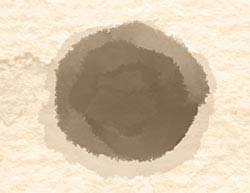Chicago
Great Lakes
The lake is long. Lake Michigan is only the second largest but it’s an ocean. From Lakeshore Drive, it is clean and rippled, detritus, dirty wet sand. At the water’s edge, the sand is washed. On the sidewalk there was paper and plastic, jagged broken cups, and white forks are smudged, twisted, grainy, agonized. There’s glass. Glass diamonds—tiny, chunky, everywhere. I imagine the glass gang sneaking out at night just to carpet the concrete. You see it from the bike. You try to avoid it. Avoid the grains of sand, why don’t you? People wander, dropping. Their feet wear sand socks unravelling. They’re carrying dripping ice cream bars and lidded paper soda cups, sipping, licking, and tiptoeing through the glass mine field. The beach seems safer.
It’s uneven, gouged, spread out like a wrinkled huge sheet, bumpy, disturbed, and restless. So are the people. Wandering. Some get wet. Many young people are yelling.
It’s quieter across the wide street on your left as you travel north. Lakeshore Drive is a boulevard of the world. Confident brick stone and glass semi-skyscrapers are the castle wall. Inside, some of the youngsters on the beach live next door to people who own the large vessels out on the waves. The sidewalk is clear and neat, the grass is combed, the streets are protected from congestion by warning signs, some doormen wait to help. Trees line most of the way. Behind the rampart is a village world. It’s startling, amusing, and welcoming. There are low gabled hundred year old miniature gothic townhouses, painted wooden carriage houses, and newer brick apartments. Some have neat little front gardens. There’s lots of gravel and rock islands separate evergreens from annual flowers. The wrought iron fences and gates are protective and cordial at the same time. I read many plaques. There are societies, institutes, and offices. They give help or knowledge. Books are visible from many dens and libraries. Drapes are pulled back from high ceilinged parlors. These people live graciously.
Here and there is a clapboard homely relic. The owner won’t sell to the developer. The occupants like things simpler and quiet. These narrower streets are clean and canopied. The trees shelter, guard, and cool their emissions, while they dilute toxic fumes. Garages are in some of the bowels of the elegant retreats. Enclaves within the castle walls; of the counts and earls? This is Chicago. It’s on a Great Lake. It’s the Midwest of the United States of America. It’s Europe, of course. It’s the Old World reconstituted, renewed only a hundred years ago here.
It’s a shy place. People seem peaceful, and they help you. Store clerks don’t seem to be anxious to make a sale. Mayb they are, but they’re patient and cordial. It’s Old World charm and security with a modern twist. Proud but modest, I’d say. Is it the security of the wide Illinois plains or knowing that it’s the hub of a universe? The railroads all met here, and the airport may still be the world’s busiest. The crossroads. The world’s tallest building isn’t muscled by other giants. But it’s the leader of a gang of individualists. They’re a mixed crew of triangular, rectangular, circular, twin, skinny, single, lone thick, squat wide and thrusting, stately, demure, graceful, dynamic, solid and whimsical and silly structures. It’s an architectural forest in which you can see the trees. They’re thick-skinned and thin-sheeted, orange, charcoal, silvery, glassy black, gray, white, creamy, tan, sooty and clean.
It’s a city risen literally from the ashes. In 1871, they say, a cow caused a conflagration. What I see of the Gold Coast and the Loop grew much later, more calmly after the first rush up out of the flames. The new pioneers. I’m here pioneering a project shot, assumed, recorded and orchestrated entirely in town. It’s a local craft which will tour the world.
